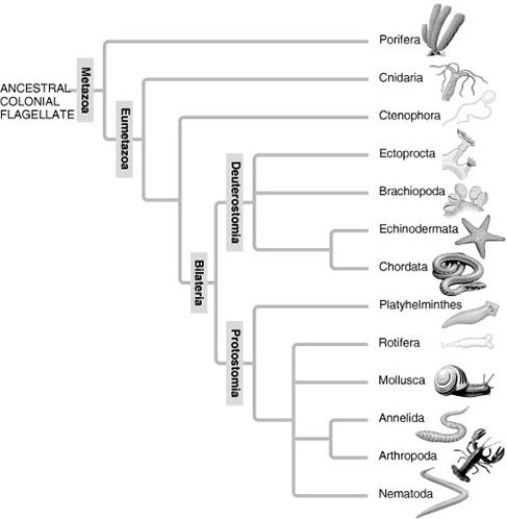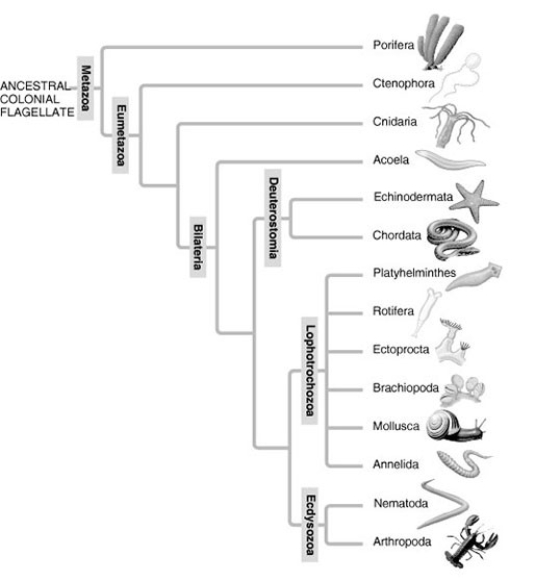Multiple Choice
Use the figure to answer the question.
A: Morphological phylogeny.
B: Molecular phylogeny.
In the traditional phylogeny (A) , the phylum Platyhelminthes is depicted as a sister taxon to the rest of the protostome phyla and as having diverged earlier from the lineage that led to the rest of the protostomes. In the molecular phylogeny (B) , Platyhelminthes is depicted as a Lophotrochozoan phylum. What probably led to this change?
A) Platyhelminthes ceased to be recognized as true protostomes.
B) The removal of the acoel flatworms (Acoela) from the Platyhelminthes allowed the remaining flatworms to be a monophyletic clade clearly tied to the Lophotrochozoa.
C) All Platyhelminthes must have a well-developed lophophore as their feeding apparatus.
D) Platyhelminthes' close genetic ties to the arthropods became clear as their Hox gene sequences were studied.
Correct Answer:

Verified
Correct Answer:
Verified
Q13: Which of these statements, if accurate, would
Q22: Use the figure to answer the question.<br><img
Q26: <img src="https://d2lvgg3v3hfg70.cloudfront.net/TB3075/.jpg" alt=" Based on the
Q26: Why might researchers choose to use molecular
Q37: The distinction between sponges and other animal
Q44: An organism that exhibits a head with
Q50: Which of the following genetic processes may
Q55: What do all deuterostomes have in common?<br>A)
Q57: The last common ancestor of all animals
Q59: In examining an unknown animal species during